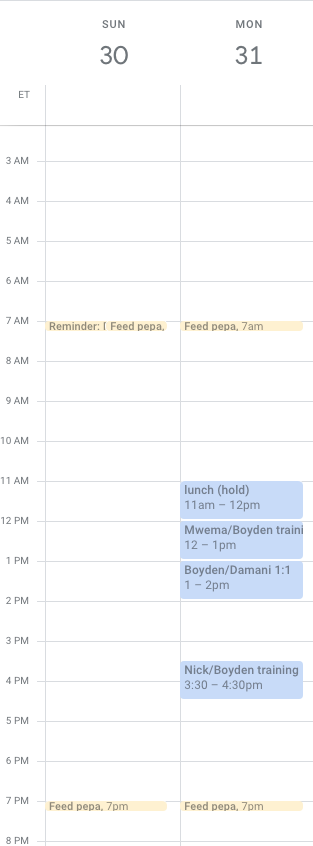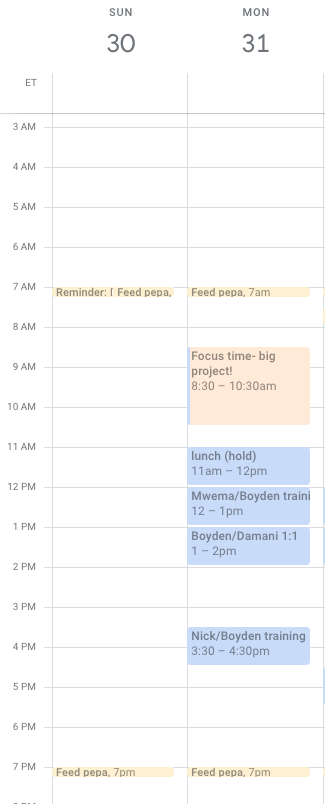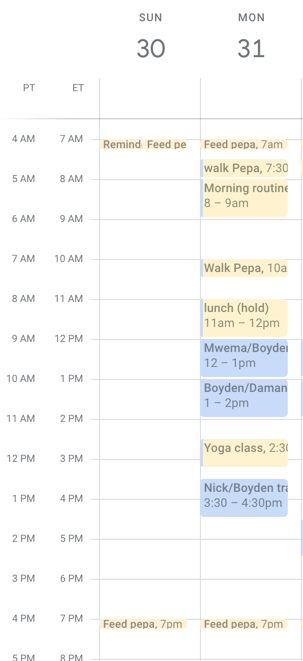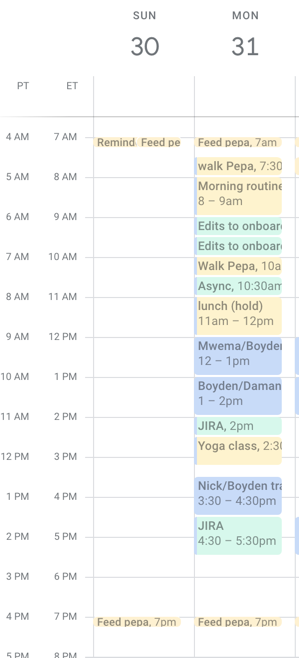2020 has been such a long decade. And so many things are outside of our control right now, which means it's easy to feel helpless.
This begs the question: what do we have the ability to control and change?
I've been thinking about this question a lot and have changed a few things in my daily situation as a result. They're small, but together they've had a positive impact on my productivity and general well-being. Your strategies might need to be different, but hopefully this encourages you to find small ways to feel a little more in control of your own life.
"Unschedule" yourself
Most people fill their schedule with work, then allow themselves to have fun with whatever time is left. What if you reversed that?
Neil Fiore calls this "unscheduling" in his book The Now Habit. He challenges you to flip your relation to work and play by scheduling play first. This helps you see that there are only so many hours in the work day. He suggests maximizing that time via 30-minute segments of deep-focused, distraction-free work.
I've been unscheduling for a month now, and I have to confess, it's not easy to rewire my relation to both my calendar and my work. But I've felt far more productive in the past month than I have for most of 2020.
To give you a quick idea, here's an example. Without unscheduling, a typical Monday for me, a trainer for Zapier's support team, would look like this:

In the past, I'd see that open morning free of meetings and plop some focus time on my calendar to make headway on my priority project, like this:

It's taken a few years for me to realize this time-blocking doesn't work for me. So now, I unschedule the day, putting in "play" and activities that help me recharge. It then looks something like this:

Throughout the day, I record my deep-focused work only after completing 30 minutes. Yes, it feels weird to add past events to a calendar, but remember: you're keeping track of your focused work, and you can't be sure it's focused until you've done it.
By the end of the day, my calendar looks something like this:

That's an ideal result for that day: three hours of focused work on a Monday in addition to my three scheduled calls. It doesn't always go that well, but I have more good days than bad days with this method when it comes to my productivity. The biggest benefits so far are:
I work with more focus knowing that I'll soon reach a scheduled break to recharge.
I get more done in less time.
I don't feel guilty about being away from work during my breaks.
I can see where my time is going (very helpful in 2020).
Put up boundaries between home and work
When I first started working remotely, a colleague gave me a tip: go outside and walk around the block before starting work. As much as remote workers love to celebrate our commute-less mornings, research suggests that a commute even as short as 15 minutes is an effective way to transition from home mode to work mode (and back). After all, nobody wants to feel like they're living and sleeping in their office.
Beyond a short "commute" walk, there are lots of other ways to set up boundaries between work and life. Some other boundaries I've set:
No Slack in the bedroom
No Slack on OOO days
Buying a Personal PC (all my personal errands/work are done on this computer, and work stuff stays on my work laptop)
Hard stops at a certain time every day
Boundaries are only effective if enforced, so chat with your partner, your roommates, your friends, your coworkers, or your manager for ideas and—more importantly—for accountability. With some exceptions, you can control all these boundaries, so take advantage of that.
Find your tech-free mindfulness moments
Mindfulness makes you more productive, and I've found finding time for mindfulness has helped me feel more in control.
I've practiced mindfulness in a few ways: with mindfulness apps, guided meditations on YouTube, and even mindfulness sessions led by my coworkers over Zoom calls. While all of these are helpful, each one involves a combination of an app, a screen, and Bluetooth, tethering me literally and figuratively to the internet. It can get pretty thought distracting.
Thich Nhat Hanh, often credited as a major influence on bringing mindfulness to the West, describes mindfulness as "the capacity to be aware of what is going on." Using that as a theme, here are some practices I've done in my day-to-day to be more aware.
When I walk my dog, I've stopped bringing my phone. So instead of my usual podcasts or reading the news, I walk while focusing on the breeze on my skin, the sound of the birds, and how my sweaty shirt feels.
While doing dishes or laundry, I'll ditch the headphones and instead observe things like the temperature of the water, the smell of the soap, or the whirring of the fan.
Even if you find just a few seconds of mindfulness, it can help you feel relaxed. There's a premium on relaxation these days, so take control of your time and give it a try.
I hope this helps spark some ideas about the parts of your life that you have control over. Take advantage of those small things and make them work for you. In time they'll add up.





